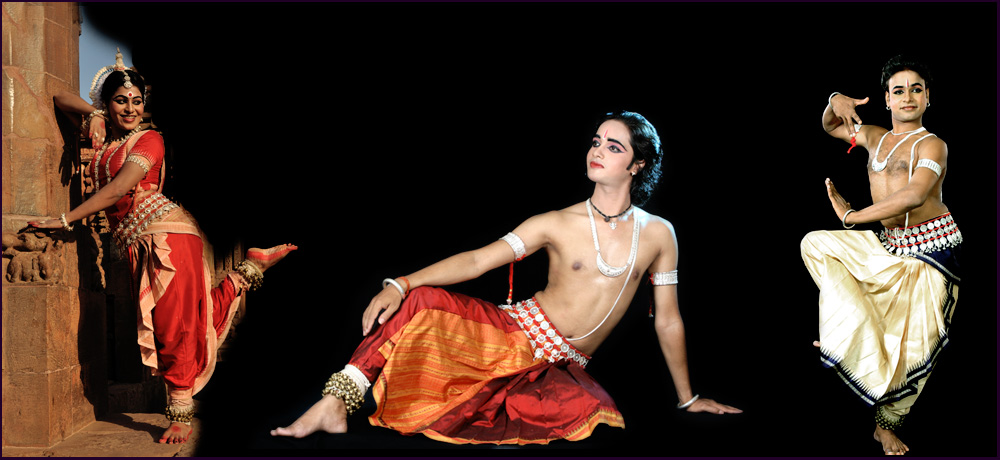

Tuesday, 9th
October 2012

Odissi - Bichitrananda
Swain's group : Rudraksh (Bhubaneswar)
| |
The
temple looks out at the turbulent sea – its magnificent ruins
redolent with memory. Sinuous forms, supple limbs and rapt expressions
frozen in stone tell of an ancient dance performed in Orissa as
far back as the 2nd century BC in sacred ritual to the gods. Later,
the devadasis – or Maharis – were given in service to
Lord Jagannath. Jayadeva’s Gita Govinda of the 12th century
enriched this tradition greatly, and spread rapidly throughout the
country. The intolerance of invader rulers, however, marked the
end of the tradition of the Maharis – a word possibly derived
from maha (great) nari (woman), or the Chosen One. Vaishnava followers,
meanwhile, patronised boy dancers – Gotipuas – who,
dressed as females, began performing in public places. Restructured
and resurgent, Odissi, today, derives from these as well as the
sculpture and manuscript traditions. Its movements continue to reflect
the motifs of the temple architecture of Orissa. It captures rhythms,
melodies and poetry taken from the vast canon of Oriya as well as
Sanskrit literature. Director of
the leading dance institution, Rudrakash, Guru Bichitrananda Swain
has emerged as one of the foremost gurus of Odissi. An exceptional
performer and instructor, he has a Masters with top honours from
Utkala University in Bhubaneswar. Bichitrananda Swain has trained
under the stalwarts of Odissi – Gurus Kelucharan Mohapatra,
Ramaniranjan Jena, Gangadhar Pradhan and Sanjukta Panigrahi. He
has worked with several international organisations, been visiting
faculty at Nrityagram and has also headed the Odissa Dance Academy.
One of the leading choreographers in the new generation of Odissi,
he founded and nurtured the Rudraksh Foundation to promote a wider
acceptance of the male aesthetic in what is a predominantly female
dance form. Today, Rudraksh is one of the important dance institutions
catering to international sensibilities but also rooted firmly
in the traditions established by the founding fathers of Odissi. |
| |
Presentation An ‘Evening of Enchanting Ecstasy’ begins with Mangalacharan as dancers make an offering of the fragrant jasmine, marigold and tulasi to the lord of the universe, Jagannatha, to invoke his presence and blessings. The heady, lingering perfume of the flowers finds expression in Pallavi, a pure dance composition with intricate footwork and elaborate movement. This is followed by Samuditha Madhane – an abhinaya piece from Gita Govinda. And finally, Tala Madhurya, a unique and widely acclaimed composition choreographed by Guru Bichitrananda Swain that underscores the male aspect of Odissi. |













